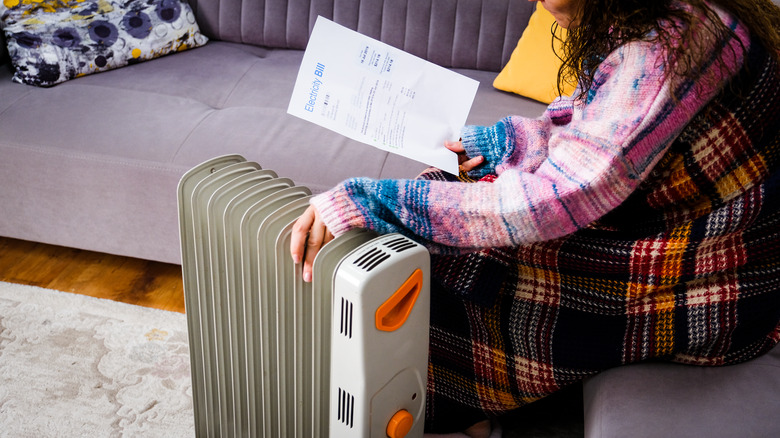What Is The Ideal Temperature For Your Basement In The Winter?
On the first cold day of winter, you may be shocked to step into the basement and feel the cold rush of air. If you routinely use your basement, you may want to increase the temperature in this space to keep it comfortable. Since heat rises, keeping the temperature in your basement the same as the rest of the home is more difficult. Depending on if you have an unfinished basement, you may want to adjust the temperature to accommodate your needs. However, you don't want to let it get below 60 degrees Fahrenheit in the basement –- that could make it easier for pipes to freeze and burst.
The basement's location underground makes it more likely to have a significantly lower temperature than other floors in the home. That's specifically true in homes where there's a lack of insulation or in very cold climates. If there are drafts, poor seals around basement windows, or ventilation problems, the risk of a cold basement increases further. Remember, too, that heated air rises, which means even if your furnace is in the basement, most of that hot air is moving to the upper floors, keeping the basement colder. More so, colder air tends to be heavier, causing it to sink. Called the stacking effect, these factors, along with the air pockets created by floors in your home, make for a very cold basement. Even if you don't use your basement often, keeping it warm is critical to prevent damage.
Why you should heat your basement during the winter months
Perhaps you don't use your basement all that often, and you want to conserve energy (no one likes those high heating bills when the weather drops significantly). It's not wise to allow the basement to drop below 60 degrees Fahrenheit, though. As noted, very cold conditions can cause your water pipes to freeze, increasing their potential to burst due to ice buildup. There's also the importance of comfort – if you plan to turn on and off the heat when using your basement, that's going to increase costs. Putting that aside, there are a few other reasons why you should focus on balancing temperatures throughout your home.
One of those reasons is that it will actually improve energy efficiency by doing so. If the basement isn't heated or is very cold, it is much more challenging for the furnace to heat the flooring in the space just above it, meaning your system is working harder and longer just to reach the desired temperature in your living spaces. You may also see fewer mold spores and mildew spots develop in your basement. That may seem illogical since we're often told that warm places encourage mold growth. However, running your home's heater will help to reduce and balance humidity, which is the real culprit in the spread of mold and mildew. Your furnace will add heat to the basement but doesn't increase humidity.
How to heat the basement just enough during the winter months
It may seem that the only option is to turn up the heat throughout the home to get the basement to reach the desired temperature, but that's often not the best decision to make. Start with keeping as much of the cold air out of this space. To do that, add insulation to the basement if you haven't already done so. You'll want to install storm windows or insulate your basement windows from potential heat loss as well. Find and seal all leaks and cracks.
Then, make some bigger investments. For example, adding more vents in the basement will encourage more heated air from the furnace to make its way into the basement. Work with a heating contractor to determine if this could benefit your home.
Also, consider the use of zoned or smart thermostats. Zoned thermostats will work together to create a balance of heat in all areas. You can set the basement temperature to 65 degrees Fahrenheit, for example, and not have to worry about the furnace trying to increase the temperature to the same level as the other floors in your home. When done well, this can help to reduce your total energy use and overall energy costs. Consider installing these in any area of the home you don't use often but still need to reduce the risk of temperatures dropping too low.


